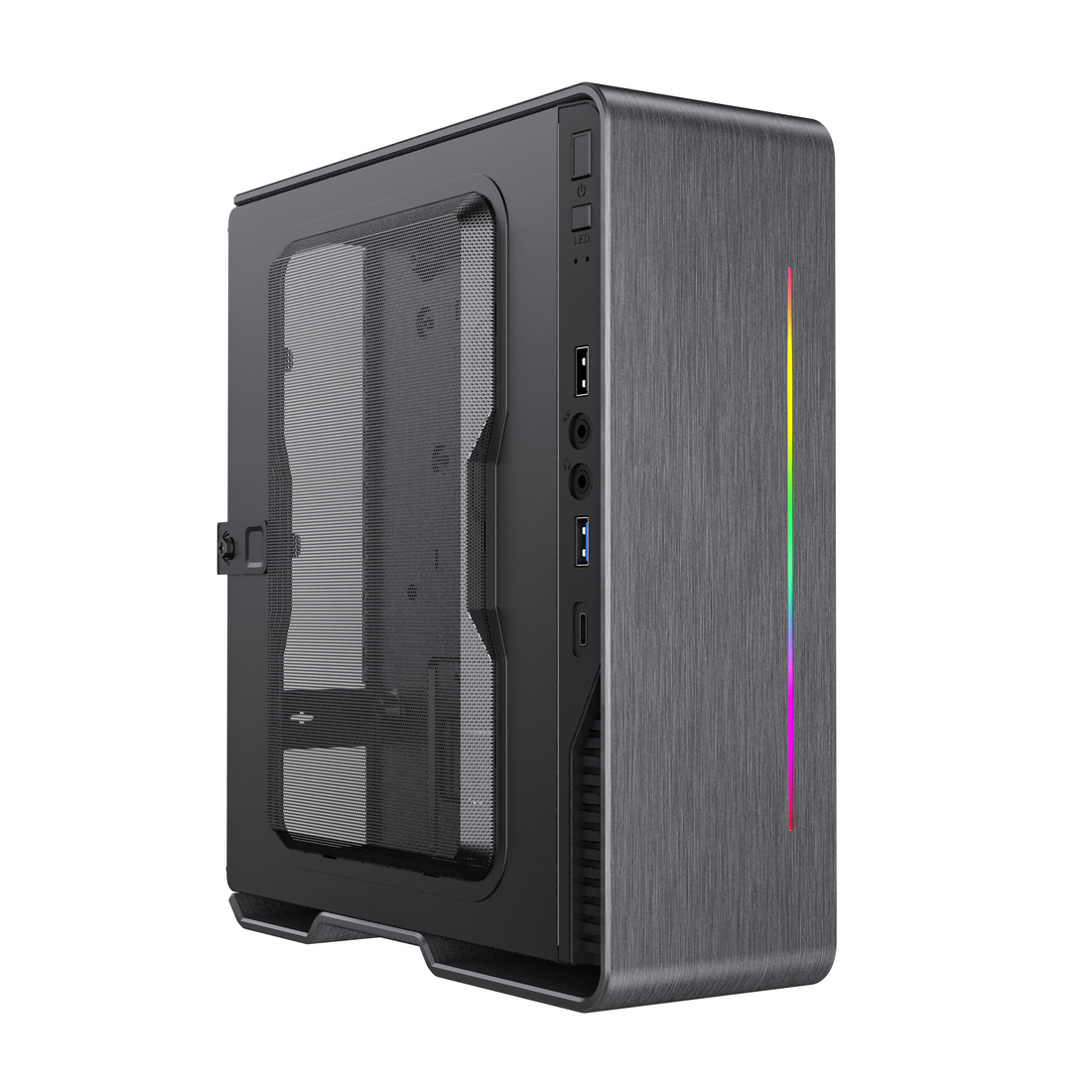
How to choose the appropriate mini PC case and form factor
Share
Overview of different mini PC cases and form factors, along with their corresponding PCB sizes, typical performance ranges, and key differences.
1. Mini PC Cases and Volumes
These terms refer to the case's internal volume, measured in liters (L). The volume impacts the size and performance capabilities of the mini PC.
1L Case
- Size: Very compact, approximately 150mm x 150mm x 45mm.
- Motherboard Compatibility: Typically uses Mini-ITX or custom PCBAs.
- Performance: Often designed for low-power systems, such as thin clients or media players.
- Cooling: Limited space for cooling solutions, typically relies on passive cooling or small fans.
1.5L Case
- Size: Slightly larger than 1L, around 200mm x 200mm x 50mm.
- Motherboard Compatibility: Mini-ITX.
- Performance: Supports slightly more powerful components, such as entry-level CPUs and GPUs.
- Cooling: Small fans or improved passive cooling, slightly better thermal management.

3.3L Case
- Size: Around 230mm x 230mm x 65mm.
- Motherboard Compatibility: Mini-ITX.
- Performance: Suitable for mid-range systems, often used in compact office PCs or HTPCs (Home Theater PCs).
- Cooling: Can accommodate small CPU coolers, allowing for more efficient cooling.

4L Case
- Size: Approximately 240mm x 250mm x 67mm.
- Motherboard Compatibility: Mini-ITX.
- Performance: Capable of supporting mid-range CPUs and discrete GPUs, suitable for more demanding applications.
- Cooling: Allows for standard low-profile cooling solutions.

8L Case
- Size: Around 300mm x 250mm x 100mm.
- Motherboard Compatibility: Mini-ITX or mATX.
- Performance: Supports more powerful components, including higher-end CPUs and GPUs, making it suitable for gaming or professional workstations.
- Cooling: Can accommodate larger cooling solutions, including tower coolers or water cooling.
2. PC Form Factors
These terms define the size and layout of the motherboard, influencing the overall size, performance, and expandability of the PC.
Mini-ITX
- Size: 170mm x 170mm.
- Expansion Slots: Typically 1 PCIe slot.
- Performance: Limited to fewer expansion options; can support high-performance CPUs and GPUs in a compact form factor.
- Use Cases: Ideal for compact gaming PCs, home servers, and HTPCs.
mATX (Micro-ATX)
- Size: 244mm x 244mm.
- Expansion Slots: Up to 4 PCIe slots.
- Performance: More expandability compared to Mini-ITX, suitable for mid-range to high-end gaming and workstation builds.
- Use Cases: Balanced between size and expandability, used in compact desktops.
ATX
- Size: 305mm x 244mm.
- Expansion Slots: Up to 7 PCIe slots.
- Performance: Supports the highest level of performance, including multiple GPUs, additional storage, and extensive cooling options.
- Use Cases: Full-sized desktops for gaming, professional workstations, and servers.
SFF (Small Form Factor)
- Size: Varies (typically smaller than mATX and larger than Mini-ITX).
- Performance: Designed for compactness with a balance of performance, often used in office PCs or space-constrained environments.
- Cooling: Limited due to compact design; may include proprietary cooling solutions.
- Use Cases: Business PCs, compact workstations, and multimedia PCs.
3. Related Sizes and Differences
| Form Factor | Typical Volume (L) | Motherboard Size | Performance Capabilities | Cooling Options | Typical Use Cases |
|---|---|---|---|---|---|
| 1L | 1L | Mini-ITX | Low-power CPUs, passive cooling | Limited | Thin clients, media players |
| 1.5L | 1.5L | Mini-ITX | Entry-level CPUs, small fans | Small fans or passive | Office PCs, media centers |
| 3.3L | 3.3L | Mini-ITX | Mid-range CPUs, compact GPUs | Small tower coolers | HTPCs, compact office PCs |
| 4L | 4L | Mini-ITX | Mid-range to high-end CPUs, GPUs | Low-profile coolers | Gaming PCs, workstations |
| 8L | 8L | Mini-ITX or mATX | High-performance, more expandability | Larger coolers | Gaming, professional workstations |
| Mini-ITX | 1-8L | 170mm x 170mm | Compact, high performance | Varies by case size | Gaming, home servers |
| mATX | 10-20L+ | 244mm x 244mm | Mid to high performance | Better cooling options | Balanced desktops |
| ATX | 20-30L+ | 305mm x 244mm | Highest performance, multi-GPU | Extensive cooling | High-performance desktops, servers |
| SFF | 5-10L | Varies (Mini-ITX, custom) | Balanced performance | Proprietary or small coolers | Business, compact desktops |
4. Key Differences and Considerations
- Size vs. Performance: Smaller cases (1L-4L) are more compact but often sacrifice performance and expandability, while larger cases (8L+) offer more room for high-performance components.
- Cooling: Smaller cases have limited cooling options, which may restrict the use of high-end components. Larger cases allow for better cooling solutions, essential for maintaining performance.
- Expandability: mATX and ATX form factors offer more PCIe slots and drive bays, suitable for users needing multiple GPUs or extensive storage options.
- Use Cases: The choice of form factor and case volume depends on the intended use. For example, a 1L case might be perfect for a media player, while an 8L case could be ideal for a compact gaming PC.
By understanding these differences, you can choose the appropriate mini PC case and form factor based on your customer's needs, whether it's for space-saving solutions or high-performance applications.
